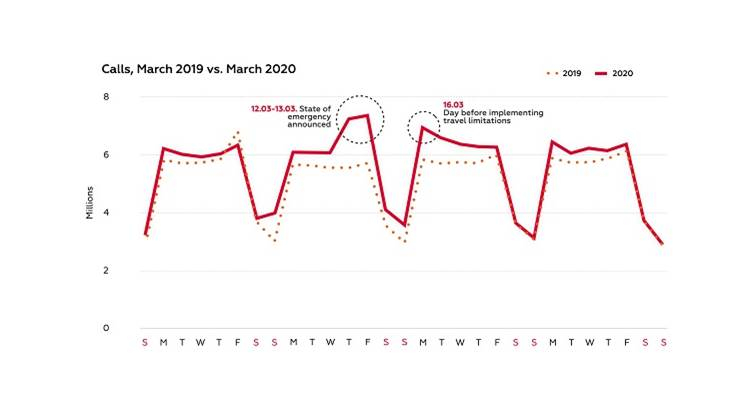The LMT (Latvian Mobile Telephone) said that its mobile network has been used to test the efficacy of social distancing measures that have been put in place to mitigate the spread of the Covid-19 virus.
LMT in collaboration with the University of Latvia have created a study using big data provided by the mobile network to better understand human behaviour under the new restrictions of social distancing and staying at home.
The use of big data from mobile network usage is significant not only within the scope of tracing population behaviour during times of pandemic, but has further implications regarding urban planning and other population planning incentives.
The study has found that indeed the populations are heeding policy suggestions to stay at home. By observing that populations remain in areas that mostly dwelling neighbourhoods, and that the typical business centers of the city have a drastic decrease in activity, it is evident that employers as well are newly embracing work from home policies.
The data also makes it possible to remotely and accurately observe hotspot locations, such as supermarkets, to ensure that distancing measures and visit limitations are being observed.
By observing trends in the data, it is also possible to develop predictions for future population behaviour trends. This provides the opportunity to implement preventative measures before the need for them becomes evident, thereby more effectively fighting the spread of the Covid-19 virus.
Importantly, this study demonstrates the potentially impactful role of the mobile network’s big data to provide accurate data on population behaviour and population change, while observing GDPR laws and individual privacy. Population surveillance, therefore, does not have to be intrusive.
There has been a significant increase in the number of phone calls made. In some cases, the daily phone call volume has exceeded that of new year’s, typically the most in-demand day of the year. A change in the behaviour of phone calls has been observed, shifting from the M-shaped pattern (with two peak times for phone calls – around 11:00 and 17:00) to a morning peak.




















